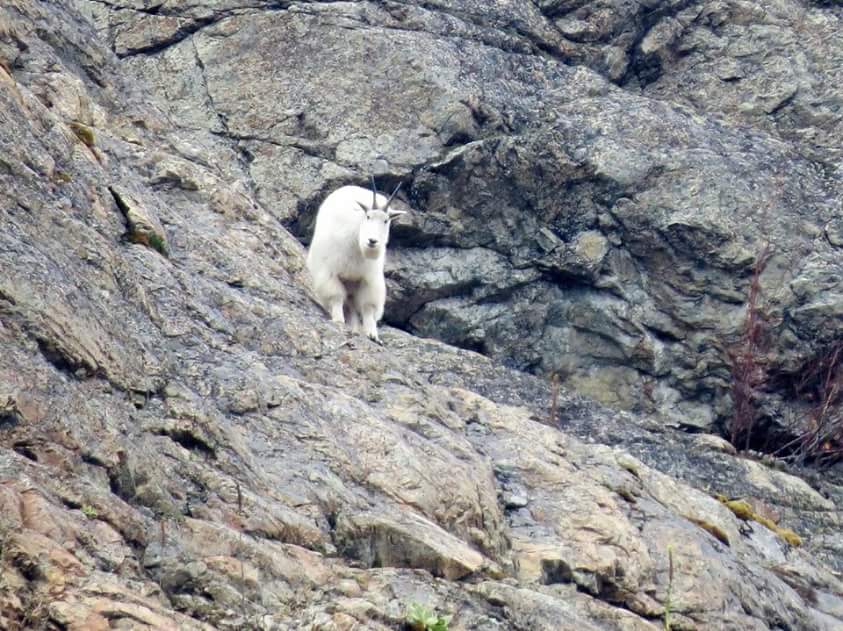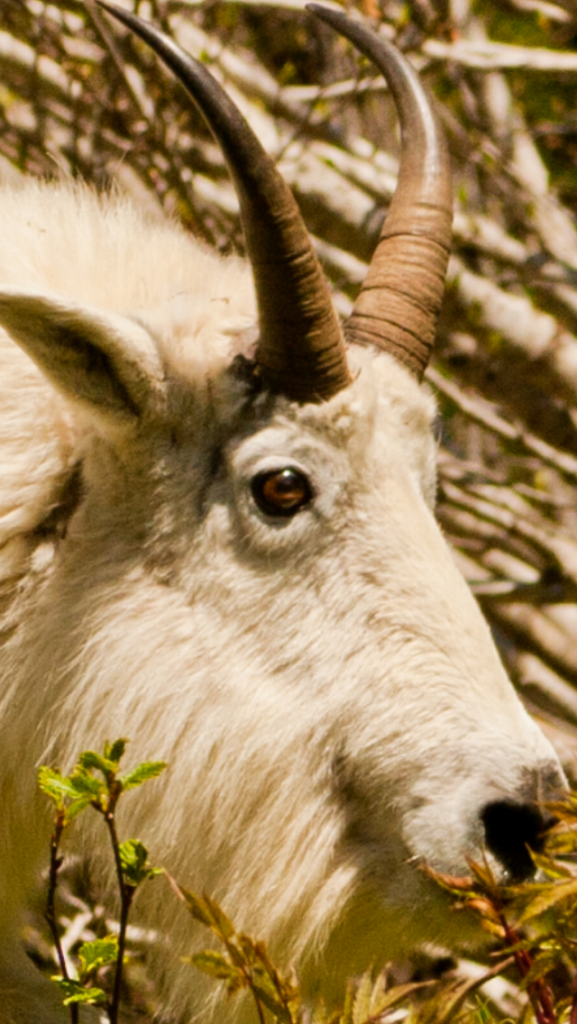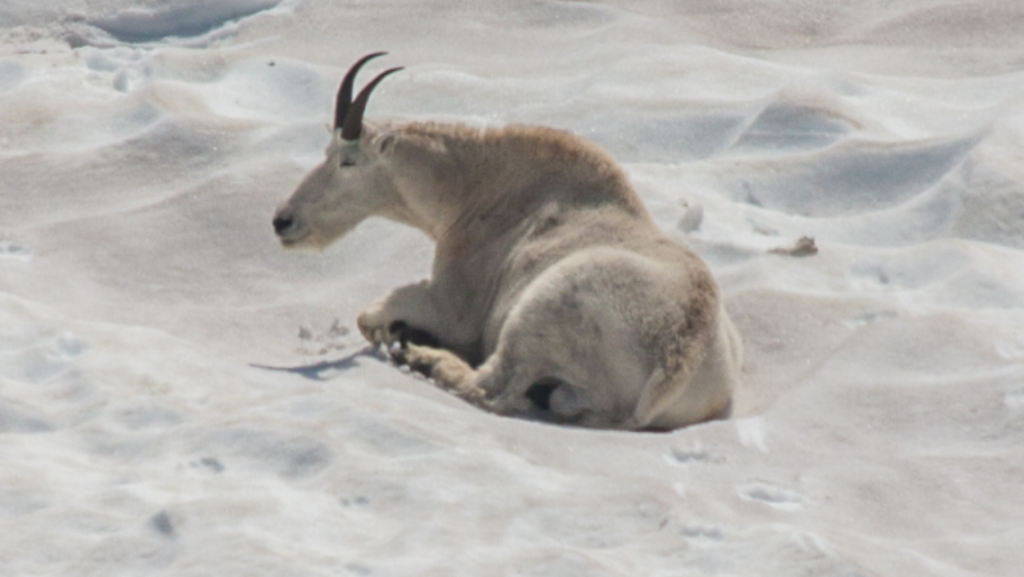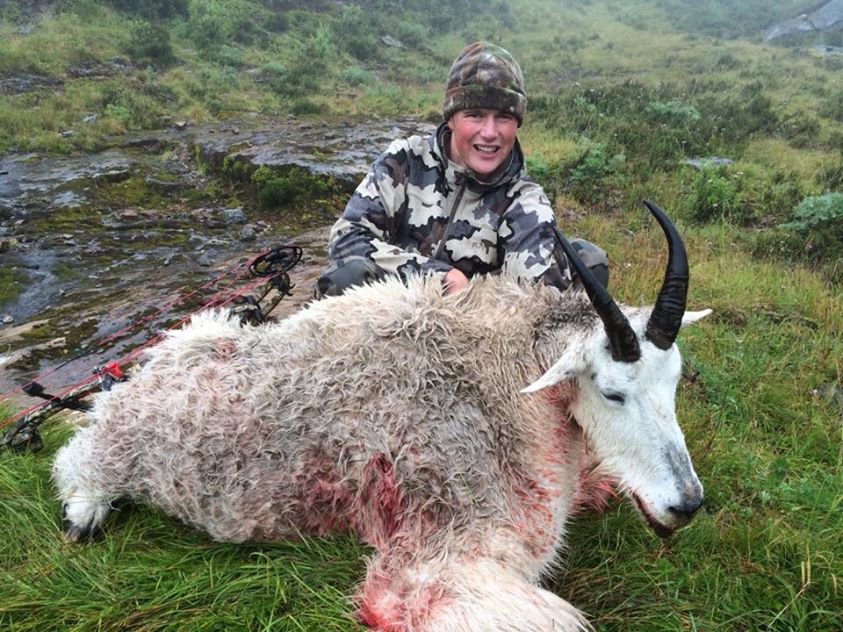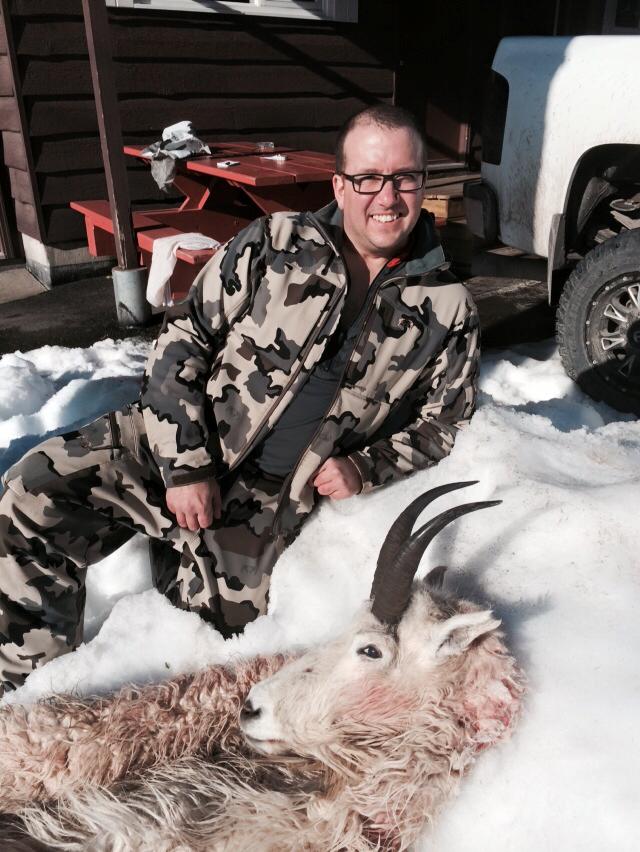Arrowing record book goats. It’s not as impossible as you’d think and you don’t have to be a ninja of the crags or be able to split arrows like Robin Hood to do it. With some grit, the fitness to get to them and a bit of knowledge, this is a dream any committed mountain hunter can realize. I’m going to outline what I feel are the necessary steps to help you get the job done.
I’m going to give it to you straight here. If the following basic pieces aren’t in place, the steps I’ve outlined below won’t mean squat. I’m assuming you’ve put your time in at the gym and have been logging outdoor training time in the steepest, gnarliest terrain available to you. I also assume you’ve been shooting lots and are confident past 60 yards with your archery equipment (unless you’re a trad hunter).
Yes? Good, Now let’s get started.
Step 1: Finding Your Book Billy
You’ve done all your research and you’re confident deciphering the sexes, but how do we determine if we’re looking at a good, mature male? It is always nice to find a band with more than one billy so you can compare them to each other. If you can see two billies with one noticeably larger than the other, that is an obvious indicator of a mature male. A goat’s face can also tell you a lot. A Roman nose on a billy is a dead giveaway of an older male. You will notice that younger billies have a sort of concave or dished nose. Mature goats will often show dominance among their peers as well, especially in the rut, so pay attention to the typical dominant male behaviours consistent across virtually all game species.
Step 2: Field Judging
Okay, you’ve found a goat that meets our basic criteria for a mature billy, but is he big enough? If you want a true outlier you’ll need to spend some time behind the glass and focus on some very specific characteristics. I’ll break this section up into the 3 key aspects of assessing a legitimately remarkable billy: length, mass, and symmetry. In my opinion goats are the toughest species to accurately judge in the field.
Determining Length
The first major box on our checklist is the most obvious: length. On a mature billy, my general rule of thumb is that from the base of the horns to the tip of the nose is going to be somewhere around the 9” mark. There is nothing wrong with a 9” billy. On a mature male your average base will be around 5” – 5.5”. If he carries his mass well, you will find yourself right around the 48” mark and sitting pretty, not only in Pope and Young, but also in the Boone and Crockett record books, which is fantastic.
If we really want to hit that 50″ B&C All Time mark however, we will have to do better and hold out for a 10” or longer billy. Another benchmark I use when determining length is the ears. A mature goat’s ears are right around 6” long, judging this accurately will depend on the angle of view and whether they’re upright and prominent when you’re looking at the goat through your spotter or binos. If we compare the length of the horns to the length from the tip of the nose to anywhere around the halfway mark of the ear, we have ourselves a nice long goat. If the goat has a nice, wide spread and still looks long, it is probably even longer than you think. Although the spread doesn’t add to the score, it gives it great character and personality.
Determining Mass
This can be very tricky. The first thing I look for when judging mass is the width of the base of the horn compared to the eye of the goat. Again, if we’re holding out for a true outlier, the horn must be at least 1.5x the width of the eyeball. If it looks very close to twice as wide, he’s probably sitting there with 6″ bases. This extra 1/2″ goes a long way when scoring a billy. Another very important thing to consider when judging mass is to be aware of the glands. From a distance, when it looks like the horns are so heavy they’re touching at the bases, it is usually because of large glands tricking you. The last crucial thing while judging mass is to get that nice side profile to make sure he carries mass all the way up to the lamb tips.
Assessing Symmetry
One of the hardest things to judge and in my opinion, our least concerning criteria. The goat would almost have to be deformed to produce a remarkable difference in mass on each horn, but one thing that is noticeable are broken off tips, quite common in older males. It doesn’t sound like much, but every deduction adds up when scoring a goat. Like a broomed off ram, I believe busted tips, horn rot from the glands, and any deformities give the goat much more character and personality, but to each their own.
Step 3: Making a Game Plan for the Stalk
OK, wow. We just located the billy of our dreams, but just because we can see him, that doesn’t mean we have a hope in hell of reaching him. I don’t have a set list of factors I cycle through when determining a game plan. But I’ll break this section down into the essential questions we need to ask ourselves if we’re going to have a chance at success.
Time of Day
One of the first things I always reference is the time of day and whether we have enough light to make a stalk and an ethical shot that results in retrieval of the goat. I can’t stress that point enough. You may be able to get to and even make a shot on the billy but if the chances of retrieving him are questionable you need to re-think your plan or even the goat you’re after.
Since we already judged the goat through our spotter, we’re most likely 400 – 600 yards from him. Depending on the terrain, this could take anywhere from 1 – 6 plus hours for a stalk. If it’s late in the afternoon (depending on the time of year of course), it is probably best to put him to bed and be ready for him at first light.
Choosing Your Route
The second most important consideration when stalking a goat is to do everything you can to stalk from above. When you come from below, it is easy to bump goats higher onto unreachable cliffs. When you come from above, it is easier too keep an eye on them and stay undetected. Like sheep, goats have a bad habit of looking down because their predators almost always come from below. If you happen to get busted coming from above, they are not always too fond of it, but most of the time they’re just curious as to what you are and how the hell you got above them. Also, make sure you’re able to climb both down and up the face you plan to make your stalk on, it’s always steeper than it looks from below.
Is He Bedded Down?
I throw these numbers around loosely, but I like to reference a goat’s day time sleeping hours as typically falling between 10 a.m. – 2 p.m. You will definitely see goats up and feeding during this period of the day, but they are generally not travelling far unless they’re rutting. The sun moves a lot during the course of a day and light touches different areas of the mountain as it moves. If it is later in the season, or cold, bad weather, you will usually see goats move up and down the mountain to stay bedded in the sun. This is a massive consideration during your actual stalk. Sometimes the goats will walk right to you if you’re in the right spot on the mountainside. If it’s a hot, early season day the reverse applies, you’ll almost always be hunting the shade.
Do I Have Cover?
Most of the time you’re going to be in the alpine where there is not a lot of cover. Sometimes you have to be creative and get low and use the natural contours of the hills. If you’re lucky, you will have small, thin timber stands, large cracks to walk through, caves, boulders and even snow that can help you stay concealed on your approach. I like to keep a paint suit in my pack because if you’re really stuck in the open it can trick goats into thinking you are one of their own.
A quick note that’s very important to remember. While choosing your most concealed route of attack, it is extremely important to pick landmarks that will lead you to the billy. It’s very easy to get too focused on the most concealed approach while losing the goat in the rough terrain! Landmarks will help you determine your location when you’re not able to keep your eyes on your billy. They will give you a rough idea on the correct elevation (remember we don’t want to get below him) and how many yards you have left before you’re within shooting distance. Another important thing to remember is if it looks like the goat is looking at you, he probably is. Goats are notorious for their eyesight and it is believed to be the equivalent of 8 – 10 power in optics terms.
Wind and Thermals
As bowhunters we of course understand the crucial role that wind plays and if we’re even remotely competent mountain hunters we also know that thermals are going to be blowing up the mountain throughout the day and we likely won’t have to worry about them during our stalk. That being said, the wind swirls in the mountains, especially in the steep country true trophy class billies tend to call home. It is a very good idea to keep a bottle of wind checker on you (as in NOT in your pack) because, like most animals, goats will pick up your scent with the faintest shift in the breeze. It goes without saying that if you have raging winds, it is NOT a good idea to take a shot over 20 yards. It seems possible. Trust me, it’s not.
Is He Retrievable?
One of the biggest problems while rifle hunting still applies to archery. If you’re in arrow range, you’re most likely going to be able to retrieve him. Keep in mind what’s below and around him because he is going to run and find somewhere to bed down. If you manage to stay completely off the radar, he’s not moving more than 20 yards. If he sees you he might go for a little jaunt, but once he feels safe, he will bed down. At least 100 feet of climbing rope is an essential piece of kit in your pack.
Are Other Goats Present?
Sometimes the best route for one goat may not be the best route for the band of goats. It is important to plan your stalk around the group. Keep in mind that there may be more than one set of eyes in the bluffs and bumping one goat could send your booner running.
Step 4: The Stalk
We decided we have enough time and daylight to make an honest stalk. We’ve made the arduous ascent and stomach turning traverse through the crags to get above the billy and we’re ready to start the descent. We have the billy in sight at 200 yards. The wind is faintly blowing, so we’re constantly referencing what our wind checker tells us. We still have thermals blowing up into our face. The billy is no longer in sight, but our big snowpack landmark lets us know we are now 90 yards above him.
Now for the crucial, must-follow rules to ensure success:
- All your loud objects must go. All rain gear is immediately shed when within this range. It doesn’t matter how slow you move or if it is absolutely pissing rain. It must go.
- Next are those $500 boots that have saved your life throughout this hunt. They have to go as well. This is half the reason I always double up on socks. Don’t even think of bringing a trekking pole. Doesn’t seem fair or perhaps a little excessive? Tough titty.
- Your range finder is on hand, same as your wind checker. Your release, glove or tab should have been on all day, but if it wasn’t, it better be by now. You have an arrow ready and nocked. I can’t stress how fast things can suddenly happen, and how important it is to be ready from this point forward.
OK, back to the stalk. You just passed your snowpack and now you’re using the natural contours of the land to get you that last 40 yards. Your feet are soaked and after belly crawling awkwardly (yes it will be awkward holding a bow with nocked arrow). Your body is torn up and wet. But none of that seems to matter because your billy is now bedded down 50 yards from you.
Instead of impatiently pressing the shot and ruining everything, we lie or sit and wait because we are bowhunters and we know patience. This stalk took everything you had and you’re not going to jeopardize it now. It may only have been 45 minutes, but it feels like you’ve been sitting for 10 hours. Your body is stiff and cold, but, after watching this magnificent billy stand up and start feeding, you’re now more jacked up than ever. He still has no idea you are there, so we patiently wait for him to turn broadside. His vitals are exposed and you draw back. Shot sequence. This is easiest part of your hunt. You have practiced so much this is the least of your worries. You’re not going to let the excitement get the best of you and you just focus on shot sequence.
A perfect shot! A round of high fives and hopefully a drink from the flask. You spend the next hour taking several photos, caping and reaching out to loved ones. Nothing left to do but enjoy the backcountry and soak it all in. Oh ya, you still need to get your hard earned billy of a lifetime out of there. But that’s a different article.
I am far from what I consider to be a great mountain hunter. Some are lucky enough to be born into the lifestyle. I didn’t discover it until the age of 20. It’s been a short journey for me. That said, since discovering what I consider to be my deepest passion and true calling, I have been lucky enough to learn a lot in that brief period of time. I have been fortunate enough to stalk and harvest multiple record book archery goats. I can only hope that this article will help you the same way so many others helped me over the last 6 years of my high country career.
Best of luck to all of you in the 2016 season. I hope we’ve got a few aspiring “goaties” out there now itching to hit the mountains!


